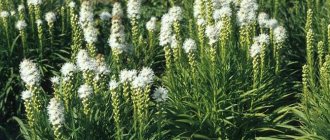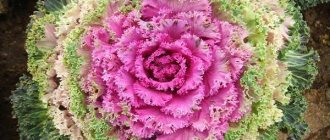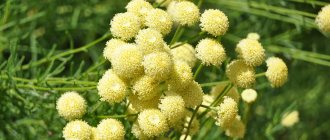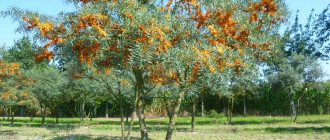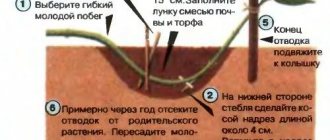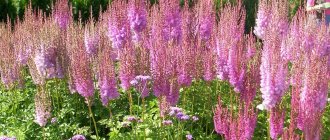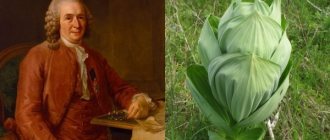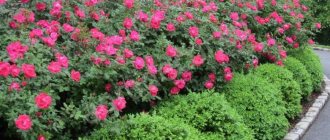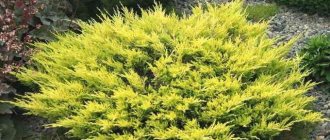Loading…
Loading…
Incomparable lavender, planting and caring for which requires special knowledge and skills, brings great joy to its owners. Its amazing aroma, unique color and beneficial properties leave no one indifferent. The flower is sung in songs and poems. Often depicted in paintings. The plant is grown in summer cottages and city flower beds.
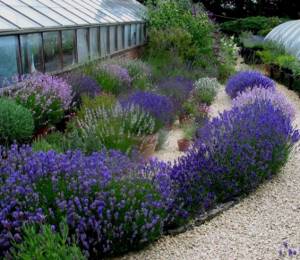
They are actively used to decorate borders, rockeries and alpine slides. What does this cute mysterious flower look like? What types of culture are there? What is the secret to planting and caring for lavender in your summer cottage? Let's find out what the experts say.
Queen of incense in a charming outfit
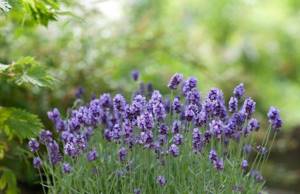
Lavender is an evergreen perennial from the Lamiaceae family. It is found naturally in India, the Canary Islands, Africa and Southern Europe. Cultivated species are grown even in countries with cold climates. The cute buds give lavender its unique beauty. They appear in mid-June and decorate flower meadows for 2.5 months.
The spike-like inflorescences are located on long shoots and sway gracefully in the wind. Each of them has from 6 to 10 buds. Depending on the variety, the petals are painted in the following colors:
- blue;
- blue;
- violet;
- pink;
- snow-white.
When the flowering period ends, dark brown seeds are formed on erect shoots. Lavender has a woody taproot. The leaf plates are narrowed ovals with a jagged or even frame.
During flowering, lavender meadows resemble a bright blanket that emits a unique aroma.
Types and varieties
So far, only such types of lavender are grown in cultivation as lavender angustifolia (English) and French lavender, also known as broadleaf. But since there are other types of lavender suitable for cultivation, we offer you a description of them. So:
French lavender (Lavandula stoechas)
Or broadleaf lavender (Lavandula latifolia) native to South-West Europe. It is distinguished by its strong aroma and beauty of flowers in different shades of purple, pink, lilac, green, burgundy and white. Flowering in French lavender begins earlier than in other plant species - in April or May - and continues until July, but at the end of summer, broadleaf lavender can bloom again. French lavender is not as cold-hardy as English lavender, so it is grown mainly in warm areas.
The most popular variety of this species is Lavandula stoechas pedunculata, or "butterfly" (Papillon), with flowers of an original shape. The most famous varieties of broadleaf lavender are:
- Yellow Vale is a variety with dark purple flowers, crimson bracts and yellow-green leaves;
- Regal Splendur - a variety with dark purple flowers;
- Rocky Road is a new variety with large lilac-blue flowers that bloom in July;
- Tiara - large blue flowers with cream bracts;
- Helmsdale is a variety with lilac-burgundy flowers.
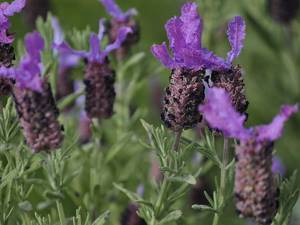
In the photo: French lavender (Lavandula stoechas)
Hybrid lavender (Lavandula x intermedia)
Or Dutch lavender is a group of highly decorative hybrids between English lavender and other species of the genus. These are large plants with silvery narrow leaves and large oblong flowers on long peduncles that bend under the weight of the flowers. Hybrid lavender begins to bloom in July.
- List of flowering vines for gazebos
The most famous varieties of Dutch lavender:
- Alba is a variety with white flowers;
- Arabian Knight - a variety with flowers of dark blue or dark purple color;
- Sawyers - form with light purple flowers;
- Grosso - a variety with large flowers of a lilac-violet hue;
- Richard Gray is a compact bush with dark purple flowers.
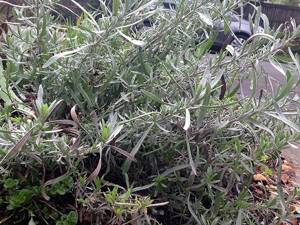
In the photo: Hybrid lavender (Lavandula x intermedia)
Toothed lavender (Lavandula dentata)
Comes from the Mediterranean. This is a heat-loving compact plant with soft, rugged leaves of a silvery hue and large, fragrant flowers that open in July. The plant is not cold-resistant. The most popular variety of scalloped lavender is Royal Crown, a plant with purple flowers.
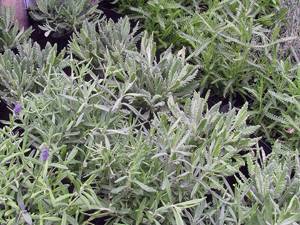
In the photo: Toothed lavender (Lavandula dentata)
Lavender angustifolia (Lavandula angustifolia)
Either English lavender (Lavandula spicata) or lavender officinalis (Lavandula officinalis) comes from Southern Europe. It is a perennial shrub with silver-green leaves and small bluish-lilac flowers that bloom in July or August. This is the most winter-hardy type of lavender. The most famous variety of angustifolia lavender is delphinium lavender, which reaches a height of no more than 30 cm, but has very beautiful silvery foliage. Hidcoat lavender is also widespread and is used mainly for low hedges.
Among the varieties of English lavender, the most popular in culture are:
- Alba - a variety up to 50 cm high with white inflorescences;
- Rosea is a bush up to 40 cm high with lilac-pink flowers;
- Manstead is a bush about 40 cm high with deep blue flowers;
- Hidcoat Giant is a compact plant up to 60 cm high;
- Hidcoat Blue is a compact bush up to 40 cm high with blue-violet inflorescences.
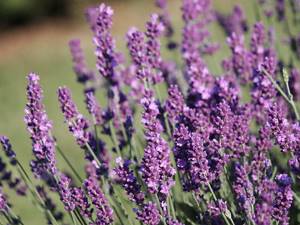
In the photo: Narrow-leaved lavender (Lavandula angustifolia)
The valuable properties of the plant are in good hands
The flower has long been popular in folk medicine. However, modern research has shown its true benefits.
Lavender contains:
- essential oils;
- tannins;
- ursolic acid;
- flavonoids;
- linalyl acetate.
Essential oils of the plant are used to create toilet soaps, perfumes and body creams. The leaves and buds are added to vegetable dishes and refreshing drinks. To treat bruises and minor burns, decoctions are prepared. For severe headaches, traditional healers offer alcohol tinctures with lavender flowers. The herb treats sore throat, relieves stress and nausea.
If you add 2-3 drops of lavender essential oil to cold water for dousing, your body will exude a pleasant aroma for several hours.
The many-faced beauty lavender is at your service
Today there are over 30 varieties of lavender. In gardening, only a few names are used. Let's get acquainted with the most popular varieties.
Narrow-leaved (English)
The plant is an erect, branched bush with an extensive root system. Its height reaches up to 1 m. With active development, it forms a lush crown of many shoots.
Popular subspecies:
- "Alba";
- "Sentiva Blue";
- "Munstead."
Its leaf blades are oblong and dark green. The edges are smooth. The maximum length of the buds is about 1 cm. The racemose inflorescences have a rich purple hue. English lavender can withstand frosts down to 20°C. Lives in one area for up to 20 years.
In winters with little snow, the crop needs additional shelter.
Broadleaf (French) lavender
The flower grows up to 1.5 m in height. Leaf blades of rich green color are located along an erect stem. Light purple buds are crowned with stable flower stalks. They emit a pleasant aroma. They bloom in mid-April and bloom until early summer. Under favorable conditions, flowering repeats in September. French lavender easily tolerates drought and does not lose its attractiveness at a temperature of +16°C.
The most popular subspecies of French lavender: Helmsday, Tiara, Regal Splendur.
Jagged Lavender
The fragrant beauty of this species is distinguished by its high growth, up to 150 cm. It received its name due to the jagged edges of the leaf plates. Known varieties:
- "Royal Grown" (purple);
- "Redundulata" (pale pink);
- "Regal Splendour" (lilac).
Spike-shaped inflorescences contain up to 10-12 buds, which are colored bright purple. The variety is considered heat-loving. The first signs of the disease appear already at a temperature of +15°C.
Grow jagged lavender in flower beds where there is plenty of light and limestone soil predominates.
Hybrid (Dutch) lavender
The variety is bred from narrow-leaved and broad-leaved species. Under favorable conditions it grows up to 2 m in height. The inflorescences bloom in the first month of summer. It is used as an industrial raw material for the production of essential oils and medicinal herbs.
Lavender as a species
Before planting any plant, you need to know its general characteristics in order to have an idea of what you want to grow on your site.
Lavender is an evergreen plant, which makes it even more attractive to any gardener. It has a green matte trunk, which is entirely covered with small leaves.
The inflorescences are collected in an arrow on which small purple flowers are located. They have a bright, rich aroma.
Not everyone knows that not only the flowers, but the stem and foliage of lavender have an aroma. They have the same aroma as flowers, but a little less pronounced and softer. Ordinary lavender has a height of at least 20 cm, the bush reaches 40 cm in diameter.
The root system of lavender is taproot with branches.
Garden lavender: planting and care in the open ground
The majestic queen of incense is propagated using seeds, grown cuttings, dividing the bush and natural layering. However, first a suitable area is selected and carefully prepared. It is the main criterion for stimulating the decorativeness of culture. Since flowers love plenty of light, an open area with maximum sunlight is suitable. It should be freely blown by the wind from all sides. In cooler climates, lavender is grown in portable containers. When the temperature drops significantly, they are removed to greenhouses or houses.
The plant develops well in the shade. However, under such conditions the number of flowering buds decreases.
The aromatic bushes do not like too wet soil. Therefore, wetlands and damp areas are definitely not suitable for flower beds. If no other options exist, you need to make high-quality drainage. In areas where groundwater flows too close, higher elevations are preferred.
The soil
As you know, a special scale is used to determine suitable soil. Fertile garden soil corresponds to 4-8 pH. For example, with a large amount of lime, the soil corresponds to the maximum value. The neutral value is 7 pH. Below 6.5 indicates increased soil acidity.
Check the pH level with a special indicator, which is sold in stores. Acidity is also checked using litmus paper. To do this, the soil is diluted with water, and then the indicator is dipped. Blue color indicates alkaline soil. There is also a simpler option.
Grows in acidic soil:
- sorrel;
- coltsfoot;
- buttercups.
On alkaline soil you can find an abundance of colza. This type of soil is best suited for planting and caring for lavender.
If the soil at the dacha is acidic, add the following:
- natural lime;
- eggshells;
- wood ash.
The plant does not like heavy clay soil with high humidity. To correct the situation, add gravel, coarse sand or granite chips.
First of all, the area for planting lavender is cleared of all kinds of debris, dry leaves, and dry grass. If there are weeds, they are cut down. Then the ground is carefully plowed with a shovel. If necessary, add humus, compost or peat. Heavy soil is diluted with sand. Level with a rake and make holes. Wood ash is added to each.
Propagation of lavender by seeds
First, let's learn how to grow lavender in the country in the most economical way. As you know, the cost of seeds is much lower than cuttings or ready-made seedlings. In addition, plants grown using this method have strong immunity. They get sick less and are resistant to pests.
Before planting lavender, the seeds are stratified. This increases germination and resistance to frost. In late autumn, the seeds are planted in the ground to a depth of approximately 4 mm. If the soil is too dry, water. They will be exposed to a cold environment for approximately 4 months. As a result, the adaptability of the plant will increase.
In winter, the bed is covered with a large amount of snow.
There is also an artificial way to stratify seeds. At the end of December, the material is sown in a small container with moistened sand. Place in the refrigerator for a maximum of 2 months. At the beginning of spring, they begin to prepare seedlings.
First of all, prepare the soil from the following components:
- forest soil (3 parts);
- sand (1 part);
- humus if necessary.
Pour it into prepared containers. Make shallow holes. The seeds are sown. Sprinkle sifted soil on top. Lightly moisturize. Cover with glass or film. They are taken to a room where there is a lot of light and a temperature of +20°C.
After about 14-15 days, single green shoots will appear. And after a month there will already be a great many of them. At this moment the covering is removed. When the seedlings have the first two leaves, a dive is carried out. A layer of miniature pebbles is placed at the bottom of the cups. Cover with soil and plant seedlings. Water with a syringe. The compacted soil is loosened with a wooden toothpick.
After 2 months, the seedlings are transferred to the prepared area.
Seedling care
As soon as the first shoots appear, the containers are placed in places where there is plenty of light. If it is not enough, connect the lamps. In a dark room, seedlings quickly stretch out, which has a detrimental effect on the crop.
An important procedure is preparation for the new environment. It is carried out gradually. Every day, the containers are taken outside and the protective covering (film or glass) is removed. The hardening time is increased. When the sprouts get used to the changing temperature, the containers are no longer covered. Water the plant regularly using a watering can. The strengthened seedlings are planted and then transferred to the beds.
Autumn sowing of lavender
In areas that experience mild winters, lavender is sown in October. First, carefully prepare the bed :
- loosen the soil;
- add a little peat;
- remove the roots;
- level the site.
If the soil is too heavy, add coarse sand or fine gravel. This ensures high-quality drainage. In the prepared soil, holes are made 4 cm deep into which the crop is sown. The soil on top is lightly compacted with feet and then watered. In dry autumn, moistening is carried out regularly.
Growing in open ground
You can grow bush lavender by seedlings, sowing seeds directly in place in October or May. When using the seedling method, seeds must be purchased in advance, since they must undergo long-term stratification. When used for decorative purposes, to obtain maximum effect, certain requirements for location, soil, and care must be observed, otherwise the quality and duration of flowering will suffer.
Related article:
Lavender: types, cooking, beneficial properties
Types and varieties of lavender for the garden, cottage : L. angustifolia (narrow-leaved), L. latifolia (broad-leaved), L. officinalis (medicinal), L. spica (spica), Bowles'Early, Cornard Blue, Grappenhall, Hidcote, Haidcote Pink , Imperial Jem, Munstead, Nana Alba, Rosea, Royal Purple, Seal.
Useful information: Is it possible to grow lavender at home, and how to do it
Requirements for place and soil
Light-loving flowering lavender blooms profusely and for a long time in a sunny place, but in the shade the flowers will be small and the color less saturated. An area where meltwater lingers in the spring and precipitation accumulates in the summer is not suitable - the root system will begin to rot. If the groundwater is close, you can build a high embankment ridge and add a drainage layer higher than usual.
The soil should be neutral or slightly alkaline with an acidity index of 6.5-7.5. On acidic, clayey soils with excess organic matter, development slows down and decorativeness suffers. The way out of the situation is not to get carried away with organic matter, reduce acidity by adding slaked lime, ash, dolomite flour, and add sand to heavy soil.
Related article:
Is it possible to grow lavender at home, and how to do it?
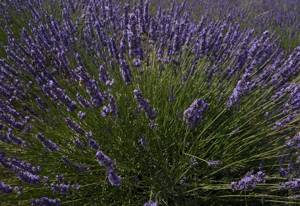
Sowing seeds in the ground
The seeds remain viable for about five years if stored in an airtight container in a dry place. In nature, they undergo natural stratification, so there is no need to artificially stratify during pre-winter sowing. The best time for autumn sowing is the end of October; in the spring they sow in May, when the soil warms up. For spring sowing, seeds must be stratified for two months at +5 °C. To do this, pour slightly damp sand into a container, lay out the seeds, sprinkle sand on top, cover with a lid, film and keep in the refrigerator (sand can be replaced with a damp cotton cloth or cotton pad).
The bed is dug up in advance (1-1.5 weeks in advance) using a shovel, loosened, and the necessary components (ash, sand) are added. Before sowing, furrows are made (depth 3-4 cm), seeds are laid out at intervals of 8-10 cm and covered with earth. In the fall, if the soil is damp, there is no need to water it; the dry soil can be slightly moistened; later, when snow falls, a small snowdrift is poured onto the ridge. Be sure to water in spring.
Related article:
6 secrets to successfully growing lavender in your summer cottage
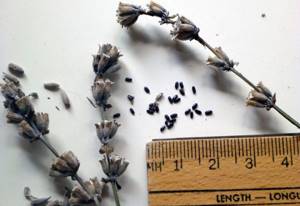
As soon as the seedlings become stronger, the seedlings are transplanted to a permanent place, leaving an interval between them depending on the planting pattern and the size of the adult plant.
Seedling method
They begin growing seedlings in central Siberia in the first or second decade of March, in the southern regions - in early February. Pre-stratification is carried out for two months. Use purchased soil or prepare it yourself by mixing garden soil, humus, and sand in a ratio of 3:2:1. The entire mixture or each component separately is disinfected with a pink solution of manganese or boiling water. The soil is prepared 2-4 weeks before sowing, so that it has time to structure a little and dry out after processing.
How to sow:
- Make drainage holes in the bottom of a low container, pour a layer (1-1.5 cm) of drainage, for example, perlite;
- fill with soil so that about 1.5 cm remains to the top, moisten;
- arrange the seeds at intervals of 2 cm (you can use tweezers or a toothpick, dipping it in water);
- cover with sand or soil (3 mm layer), moisten with a spray bottle;
- cover the container with a lid, film and place in a warm place, where during the day +20-22 °C, at night – 16-18 °C;
- ventilate the greenhouse every day, if necessary, moisten the soil with a spray bottle;
- Remove the shelter after emergence and keep the container in a bright, warm room, but not in direct sun.
Related article:
Lavender propagation
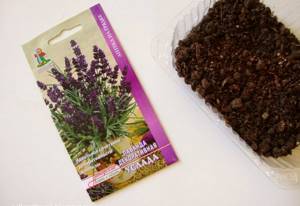
Picking into separate containers (plastic glasses with a volume of 300-500 ml is best) is carried out when two true leaves are formed. If the root is too long, then pinch the tip. As soon as positive daytime temperatures are established and the threat of return frosts has passed, the seedlings are transplanted to the site in previously prepared soil.
On a note! The hole should be slightly larger than a clod of earth, the interval depends on the varietal characteristics and planting goals. During the adaptation period, seedlings are protected from bright sun.
If you don’t want to bother with the soil and picking, then the seedlings are grown in peat tablets. Before sowing, they are placed in a tray with warm water for half an hour (the water should reach 1/3-1/2 the height of the tablet) to saturate them with moisture. After the tablets swell, the remaining water is drained. Use a toothpick to make a hole in the center, place the seed and, slightly moving the peat, cover it (2-3 mm layer) and moisten it with a spray bottle. The tray with tablets is covered with film to create a microclimate and kept in a warm room.
Related article:
Is it possible to grow lavender at home, and how to do it?
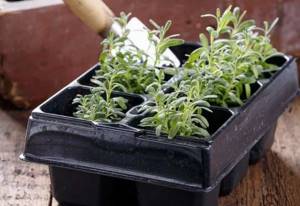
Planting lavender from cuttings
One of the most effective ways to propagate an aromatic crop is cuttings. The process begins with the selection of annual shoots from the existing bed. Then each specimen is cut into pieces up to 10 cm long. Soaked in a special root growth stimulator for 2 hours. Planted in containers with light soil to a depth of 3 cm. Cover the top with glass or polyethylene. Watering of the cuttings is carried out depending on the speed of drying of the soil. After 1.5 months, the cuttings will take root, which means they are ready for planting in open ground.
To get a lush lavender meadow, seedlings are placed at a distance of 55 cm from each other. For tall varieties, 1 m is enough. The bush is lowered into the prepared hole. Gently straighten the tender roots. Sprinkle with soil and water generously. Within a year, the young seedlings will bloom.
Loving care of lavender
There are uniform rules on how to care for lavender that grows in open ground. It needs supervision from the beginning of spring until the first frost. Let's consider all types of work step by step.
Spring pruning
When winter becomes a thing of the past, the plant is tidied up. Remove diseased or frozen shoots. They create a spherical crown so that the bushes fit harmoniously into the landscape design of the dacha area. The crop is trimmed, leaving only a third of its total height. Otherwise, the plant will get sick and die over time.
The procedure is repeated a second time after flowering around mid-summer. Remove the flower stalks and several subsequent leaves. Thanks to this, the plant gains strength to renew its greenery.
Fertilizers for lavender
In early spring, lavender is fed with nitrogen fertilizers. To do this, take 10 liters of water. Add 1 tablespoon of urea or “sodium humate” (2 tablespoons). Mix well and water the seedlings. Each bush will require approximately 6 liters of fertilizer.
When lavender begins to produce buds, it is fed with special fertilizer “Agricola-Fantasy”. Pour 2 tablespoons of the substance into a bucket of water. Approximately 4 liters of fertilizer are consumed per unit.
Mineral and organic fertilizers also have an effective effect on crop development.
Regular feeding of adult plants stimulates the development and appearance of buds. Nitrogen fertilizers are applied in the spring, when lavender is actively growing. In the summer, during the development of inflorescences, the ground is watered for the first time with potassium-phosphorus substances. After 15 days, the procedure is repeated.
Loosening the soil
Like all plants, lavender needs sufficient oxygen. Therefore, it is carefully weeded throughout the season. The procedure helps to remove weeds in a timely manner, fluff up the soil and monitor the growth of the crop.
It is advisable to cover the area with pine bark mulch to protect the flowers from tall grass.
Watering
An important aspect of lavender care is proper hydration. Otherwise, the root system will suffer and the plant will begin to hurt. Water the crop when the top of the soil dries out. In hot times, the bushes are moistened 2 times a week and sprayed with a spray bottle. In spring and autumn, once every 15 days is enough. Seedlings are watered more often.
Preparing for cold weather
When choosing a site for planting lavender, gardeners initially take into account the climatic conditions of their region. Where winters are harsh, it is placed under the protection of other plants. The variety of culture is also taken into account. For example, English lavender easily tolerates cold; planting and caring for it in the southern regions is not difficult. Lavender does not need additional cover. However, at a temperature of -25°C it can die.
The most dangerous time for lavender is melting snow and spring frosts. Due to the formed ice, the root system does not receive enough oxygen. As a result, it gradually begins to rot.
Therefore, summer residents do several procedures:
- to protect from snow, shoots are carefully tied with rope;
- the entire area is covered with mulch;
- The bushes are covered with spruce or pine spruce branches on top.
Fallen leaves are not suitable for shelter as they cause rotting.
French broadleaf lavender is very frost-resistant. Therefore, in late autumn, the bushes are covered with soil and straw. A strong shelter is built on top from dry brushwood and coniferous spruce branches. In winter, they periodically check whether parts of the structure have been blown away by the wind. If necessary, the shelter is repaired.
Plants grown in containers are stored in greenhouses or on verandas in winter. In multi-storey buildings, lavender is placed on an insulated loggia. For specimens that winter in apartments, all branches are removed in the spring.
Possible problems
If lavender grows in your area, planting and caring for it can cause you some trouble. The plant has its own characteristics that need to be taken into account.
No matter how majestic the queen of incense may be, she is not immune to illness. There are various reasons:
- unforeseen climatic conditions;
- significant errors in care;
- weeds.
For example, frequent temperature changes and precipitation have a detrimental effect on lavender. Its buds and shoots first turn brown and then become covered with a bluish coating. These symptoms indicate a serious fungal infection called gray mold.
To solve the problem, the following activities are carried out:
- carefully inspect the bushes;
- remove all affected branches;
- fluff up the soil between the rows.
In case of serious infection, plants are sprayed with special preparations. For example, "Rovral Flo", "Teldor" or "Biosept". These same substances are used to prevent dangerous infections.
There are times when weakened parts of the crop appear in the garden. And the root neck is covered with a white or pink coating. Symptoms indicate Fusarium wilt. It is eliminated with the help of chemicals that are sprayed on lavender bushes. To prevent the disease, old plantings are replaced with young seedlings.
Lavender is often affected by the Septoria fungus. Its presence is indicated by round spots. They are painted brown and topped with a dark border. Usually the parasite overwinters on the affected leaf blades. And at a temperature of +15°C it “resurrects”. Its spores are spread by wind or rain. To protect the crop from septoria, use “Amistar”, “Garant” or “Topsin”. Spraying is done several times.
How sad it is when yellow spots form on the stems, gradually turning into a gray tone. Over time, the foliage and shoots become covered with dark spots, dry out and quickly curl. Signs indicate that the lavender has been affected by branch blight. To save the plant, diseased parts are immediately removed. Healthy bushes are sprayed with Bordeaux mixture.
Pests
The crop is not protected from insects, which have a detrimental effect on its development. In order for lavender to delight with its flowering, planting and caring for the plant must necessarily include pest control measures. In hot times, the foliage and stems become covered with white cobwebs. This indicates the presence of spider mites. It sucks all the juices out of the lavender, causing it to die. Get rid of ticks using chemicals.
A solution of laundry soap, which is applied liberally to the greens, can help.
If a sticky substance resembling foam appears on the shoots, then the plant is under threat. He was attacked by pennies. Parasites lay eggs on leaf blades and stems. And to protect them, they secrete a foamy substance. Although lavender will not die from such a neighborhood, it is still better to get rid of it. To eliminate pennies, direct a stream of clean water onto the bushes, trying not to damage the greens.
Sometimes rainbow beetles come to visit lavender. Despite their attractiveness, insects with appetite devour young shoots of the plant and foliage. As a result, plantings lose their decorative value and aroma. Get rid of pests in the classic way. They are collected in empty plastic bottles and then destroyed. Thanks to this, lavender continues to delight with its unique beauty.
Diseases and pests of lavender
Among the diseases, lavender can be affected by gray mold (Botrytis cinerea), and among garden pests it is susceptible to the dominance of pennies (Philaenus spumarius). Parts of the plant affected by gray rot should be removed and burned. Pennies love to lay larvae on lavender bushes. To protect them from predators, they cover the larvae with a layer of foam that looks like saliva. This, of course, spoils the overall appearance of the plant, although it does absolutely no harm to it. Drops of white foam can be washed off the plant with a stream of water.
French and scalloped lavender can be eaten by the rainbow beetle (Chrysolina americana) and should be hand picked from the plant.
Wonderful lavender: planting and care in different regions
In the Moscow region, flowers are grown using seedlings. It is transferred to the garden bed at the beginning of summer. In autumn, woody stems are removed. For the winter period, shelters are built from spruce branches.
Lavender also grows in the surrounding areas of St. Petersburg; planting and caring for the plant have their own characteristics. It is not advisable to sow seeds in beds in late autumn. Due to severe frosts, they will not survive until spring. Plants thrive at higher elevations, where there is enough oxygen and light.
For the northern regions of the Urals and Siberia, only frost-resistant varieties of lavender are suitable. Seeds must be stratified. Before planting in a flowerbed (in June), the seedlings are gradually hardened off. During the warm season, the soil is fed. Pruning is carried out in autumn and spring.
Despite the fact that lavender is a heat-loving crop, even in cold latitudes it can delight people with its beauty. The main thing is to properly prepare the site, plant it on time, fertilize the soil, prune it and equip it with shelter for the winter.
Delicate and fragrant lavender inflorescences continuously decorate garden plots, alpine hills and flower beds. And the dried spikelets of the plant fit wonderfully into the home interior. Its intoxicating aroma has a beneficial effect on sleep. In case of irritation, relieves tension. Miniature bouquets repel insects. Alcohol tinctures are used to treat colds. It's good to always have lavender on hand.
Where does lavender grow?
The plant is thermophilic. Therefore, most varieties take root well only in warm climate zones.
The Mediterranean is considered the homeland of lavender. Flowers were brought to Europe from Ancient Rome. Today there are more than 30 varieties of lavender, some species of which grow in different parts of the globe: Central Asia, India, Arabia, southwestern Europe, southeastern Africa.
Basic requirements for planting site and soil:
- For planting, it is better to choose an open place with maximum sunlight.
- The plant prefers soil saturated with potassium and oxygen.
- The roots do not like excess moisture, so in wetlands, make a drainage layer before planting.
The best lavender fields in France
Today, many countries grow lavender in large quantities, sowing dozens of hectares with this crop. Such fields, enchanting with their aroma and beautiful views, are found in Italy, Bulgaria, Moldova, Ukraine, and Russia. But the famous lilac plantations are located in France.
In the south of France lies Provence, surrounded by fragrant fields. It is called the soul of France. In the northern part of this department (in the Alpes of Haute-Provence, Haute-Vaucluse and Drôme-Provence) there are the most beautiful fields.
Between mid-June and August, when lavender begins to bloom vigorously, crowds of tourists flock here to admire the unforgettable spectacle.
Where does lavender grow in our latitudes?
Lavender has been known in Russia for more than 200 years. It was first planted in 1752 near Astrakhan. It began to be cultivated for industrial purposes only in the 19th century in Crimea, where the largest plantations of this crop are still located.
Picturesque fields, capable of rivaling Provence in their beauty, are located near Bakhchisarai and Sevastopol, on Cape Tarkhankut and near the village of Turgenevka.
Thanks to the development of varieties that are resistant to the harsh climate of the central zone, lavender is grown in almost all regions of Russia. Mainly, as an ornamental plant, it grows in Altai, the Urals, the Krasnodar Territory and even in Siberia.
